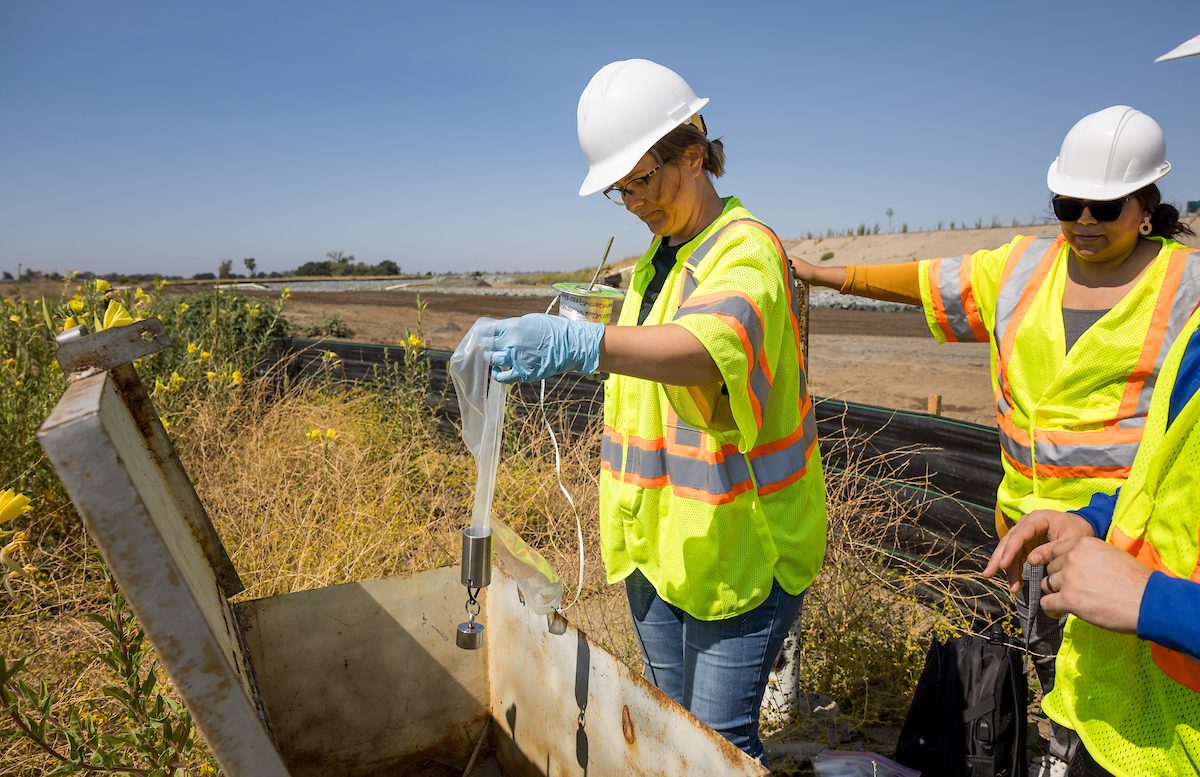- LandFlex helped conserve over 100,000 acre-feet of groundwater and protected 16,500 drinking water wells.
- Groundwater storage rose by 2.2 million acre-feet in 2024 across 98 basins.
- Active land subsidence remains a concern in multiple hydrologic regions.
- California now collects more groundwater data than ever before.
Thursday, June 26, 2025 — On Tuesday, the California Department of Water Resources (DWR) released two updates that underscore major strides in the state’s effort to secure long-term groundwater sustainability. The first highlights the success of the LandFlex Pilot Program, a partnership with small and mid-sized farmers that has already brought groundwater overdraft under control on thousands of acres. The second presents the state’s semi-annual groundwater conditions update, revealing gains in groundwater storage and sharper insight into trends such as recharge, subsidence, and well reliability.
LandFlex Program Delivers Early Compliance With Groundwater Law.
Launched in 2022, the LandFlex Pilot Program was created in response to a prolonged drought that had pushed many Central Valley drinking water wells to the brink. DWR awarded $23.3 million in grants to six groundwater sustainability agencies, which in turn supported 52 farms managing nearly 4,500 acres of enrolled farmland.
was created in response to a prolonged drought that had pushed many Central Valley drinking water wells to the brink. DWR awarded $23.3 million in grants to six groundwater sustainability agencies, which in turn supported 52 farms managing nearly 4,500 acres of enrolled farmland.
Through a combination of fallowing land, redirecting floodwaters for recharge, and reducing groundwater pumping, the program conserved more than 100,000 acre-feet of groundwater and protected 16,500 drinking water wells. Notably, the participating farms achieved full compliance with the Sustainable Groundwater Management Act (SGMA) years ahead of the 2040 deadline.
DWR credits this success to partnerships with groups such as the California Department of Food and Agriculture, Western United Dairies, and the Almond Alliance. “LandFlex represents a new chapter in sustainable farming,” said Blake Vann, Chairman of the Almond Alliance. “The success of this program proves that when we work together, we can achieve lasting solutions for California’s agriculture and communities.”
Statewide Groundwater Update Shows Signs of Progress.
Also released Tuesday, the Department’s Semi-Annual Groundwater Conditions Update shows measurable statewide improvements for Water Year 2024. Overall, California’s groundwater storage increased by 2.2 million acre-feet across 98 basins. This followed efforts to capture high flows during winter storms and expand recharge infrastructure. The year marked the 10th anniversary of SGMA, and the data indicates that many local agencies are now advancing from planning to implementation.
shows measurable statewide improvements for Water Year 2024. Overall, California’s groundwater storage increased by 2.2 million acre-feet across 98 basins. This followed efforts to capture high flows during winter storms and expand recharge infrastructure. The year marked the 10th anniversary of SGMA, and the data indicates that many local agencies are now advancing from planning to implementation.
Despite these improvements, challenges remain. The first five months of Water Year 2025 were particularly dry across the Central Valley and southern California, while northern regions saw above-average rainfall. Such regional variability underscores the need for adaptable groundwater strategies.
Land subsidence, where land sinks due to groundwater depletion, continues in several hydrologic regions, including the Sacramento River, San Joaquin River, and Tulare Lake areas. DWR plans to issue additional guidance to groundwater agencies later this year to address subsidence and the depletion of interconnected surface water.
Fewer dry wells were reported in 2024 compared to the previous three years. Still, DWR continues to invest in better monitoring tools such as satellite-based InSAR, Airborne Electromagnetic surveys, and advanced groundwater modeling.
California’s Groundwater Outlook.
Groundwater is crucial to California’s water supply, meeting some portion of the needs for 85 percent of the population and up to 60 percent of the total supply during droughts. With better data and targeted programs like LandFlex, DWR says the state is entering a new phase of action in groundwater management.
As implementation of Groundwater Sustainability Plans accelerates, both state and local agencies are focused on building resilience in a climate prone to extremes. By promoting recharge, reducing demand, and supporting well-dependent communities, California is working to ensure that the water beneath its feet remains a reliable resource for generations to come.


